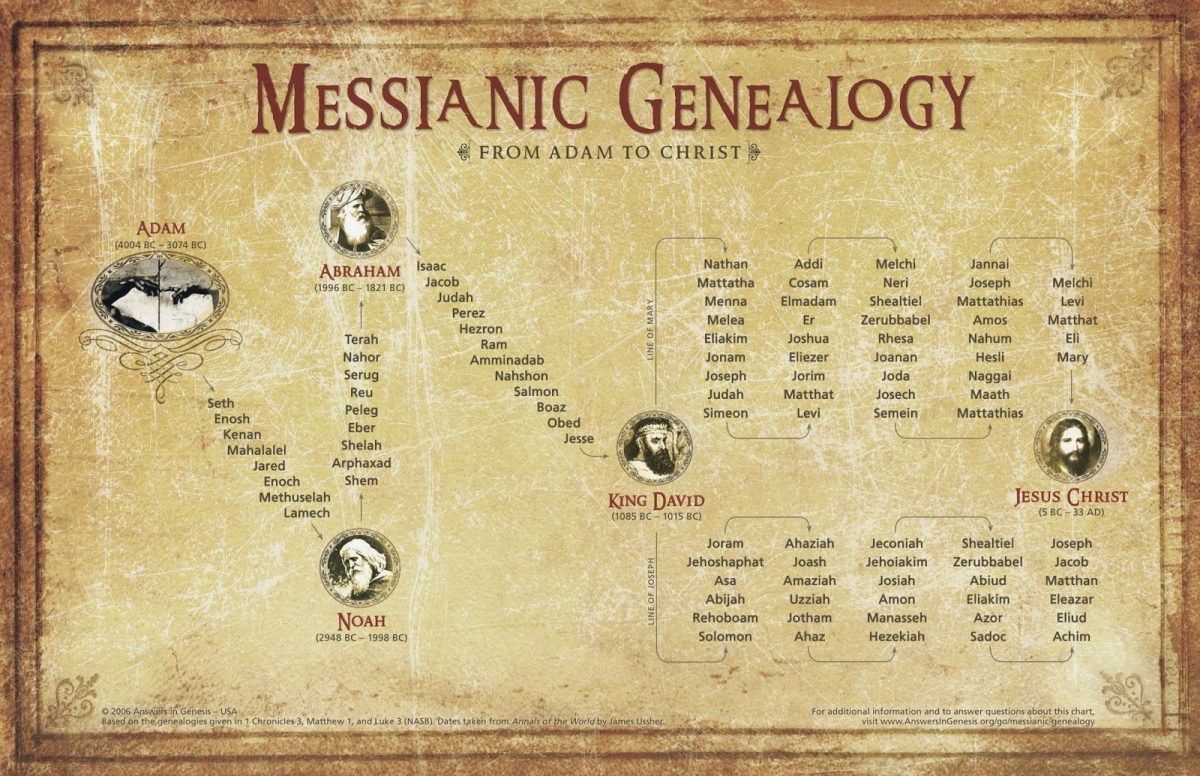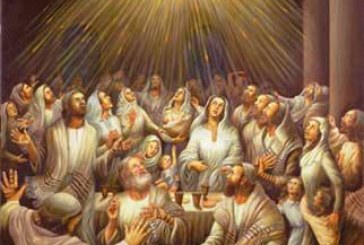Why Don’t Bible Genealogies Always Match Up?
Why Don’t Bible Genealogies Always Match Up?

It is often asked if the numbers of the genealogies of Genesis 5:3–32 and Genesis 11:10–32 can be used to calculate when Adam was born. The most important fact to notice is that the biblical writers never used these numbers for this purpose, although they did provide other numerical summaries.
For instance, in Exodus 12:40 they note that Israel was in Egypt for 430 years, in 1 Kings 6:1 that it was 480 years from the exodus until the beginning of the construction of the temple under King Solomon, and in Judges 11:26 that it was 300 years from the entry into the land until the time of Jephthah, a judge who lived around 1100 b.c.
Therefore to add up the numbers of the ten antediluvians in Genesis 5 and the ten postdiluvians in Genesis 11 in order to determine the date for the creation of the world and the creation of Adam and Eve is to do exactly what the text does not encourage us to do!
What, then, is the significance of these numbers that are so carefully recorded in these texts? If they are not to be added up, of what importance could their inclusion be?
First, they were given to show us that human beings were originally meant to be immortals and to live forever. If one charts the twenty life spans on a line graph, it is clear that there is a general but determined downward trend from a figure that at first bounces just short of one thousand years to a figure that approximates the life expectancy of persons living today, around seventy years.
Second, the figures also show that the effects of sin and death in the human body meant that individuals became unable to have children in as elderly a state as once was possible.
Bishops Lightfoot and Usher were grossly mistaken to advocate that the human race was created on October 24, 4004 b.c., at 9:30 a.m., 45 Meridian time. The data does not allow for this conclusion! Abridgment is the general rule in biblical genealogies. Thus, for example, Matthew 1:8 omits three names between King Joram and Ozias (Uzziah), Ahaziah (2 Kings 8:25), Joash (2 Kings 12:1) and Amaziah (2 Kings 14:1).
In Matthew 1:11 Matthew omits Jehoiakim (2 Kings 23:34). Matthew’s goal is to reduce the genealogies to a memorable three sets of fourteen individuals, for fourteen is the number of “David,” D = 4, V or Hebrew waw = 6 and the last D = 4, for a total of 14.
But even more typical of the genealogies is Matthew 1:1, where “Jesus Christ” is said to be the “son of David,” who in turn is “the son of Abraham.” David lived about 1000 b.c. and Abraham about 2000 b.c. Similar huge leaps over intervening generations are also taking place in Genesis 5 and Genesis 11.
If one turns Matthew 1:1 around and puts it in the style of the prepatriarchal genealogies, it could read as follows: “And Abraham was 100 years old [at the time that he begat Isaac through whom his line continued to David], and he begat David.
And David was 40 years old [an approximate date for when Solomon was born, through whom Jesus would come], and he begat Jesus Christ.” Thus the numbers of when these ancients had their firstborn function as the times when the line that was to come was given to them.
It is as if my father were one of these Very Important Persons (VIPs), and he had four sons, born when he was 100, 120, 140 and 160. Now let us suppose that it was my line, as the eldest in the family, that was the line through which Messiah was to come, and I was born when my father was 100. The Messiah would not come for another 1000 years, but it would be just as accurate, biblically speaking, to say that my father begat Messiah when he was 100.
Furthermore, there are some warnings in the biblical text that if we add up these numbers, there will be distortions and errors. Take, for example, the last one in the series of twenty VIPs: Terah. It would appear that he lived 70 years and then had triplets born to him (Gen 11:26). His total life span was 205 years (Gen 11:32).
However, something does not add up, for Abram left Haran after his father died (Gen 12:4; Acts 7:4), but he was only 75 years old at time and not 135, which he should have been had the figures been intended in a way that current usage would approve!
Hence, had we added up the numbers in this part of the genealogy, we would already be 60 years in error, for the text must have meant that Terah “began having children when he was 70 years old,” but that Abram was actually born when his father was 130 and not when he was 70. He was not the eldest son, but his name is given first because he was the most significant figure.
No one has studied this phenomenon more closely than the late William Henry Green in his April 1890 article in Bibliotheca Sacra entitled “Primeval Chronology.”1 For example, Green demonstrates that the same high priestly line of Aaron appears in 1 Chronicles 6:3–14 and Ezra 7:1–15, but it has twenty-two generations and names in Chronicles, while Ezra only has sixteen names.
When the two lists are placed side by side, it is clear that Ezra deliberately skipped from the eighth name to the fifteenth name, thereby abridging his list, but in a way that was legitimate within the traditions of Scripture. This is exactly what is illustrated in the lists in Matthew.
In fact, Ezra 8:1–2 abridges the list even further, seemingly implying that a great-grandson and a grandson of Aaron, along with a son of David, came up with Ezra from Babylon after the captivity! Now that is abridgment! Of course, Ezra was only indicating the most important persons for the sake of this shorter list.
In our discussion of some of these genealogies and lineages in the corpus of this work, further examples will be found. However, it must be acknowledged that the phenomenon is a major one, and interpreters will disregard it to the damage of their own understanding of the text.
1 This article was reprinted in Walter C. Kaiser Jr., ed., Classical Evangelical Essays in Old Testament Interpretation (Grand Rapids, Mich.: Baker, 1972), pp. 13–28.
Kaiser, W. C., Jr., Davids, P. H., Bruce, F. F., Brauch, M. T., & Kaiser, W. C. (1997). Hard sayings of the Bible (48). Downers Grove, Il: InterVarsity.


